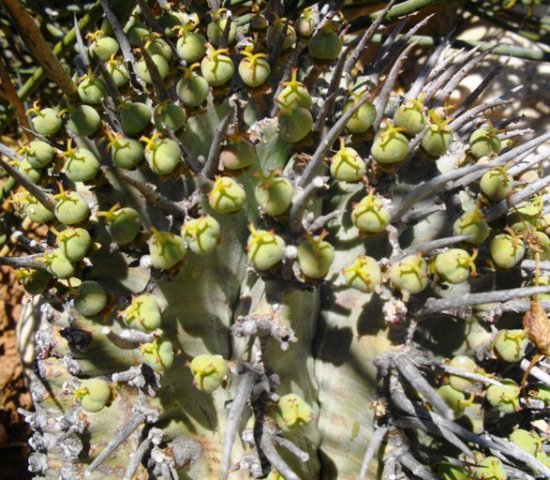Euphorbia horrida showing fruit

Euphorbia horrida has been commonly called the African milk barrel. The name may be based on the barrel-shaped stems or the milky latex (wolf milk) that the plant and other euphorbias exude when damaged, or both.
Here one is shown in midsummer with well formed, green fruits. This is a female, fruit-bearing plant; the species being dioecious. The plant faces harsh conditions in the arid southern parts of the Great Karoo. In cultivation it proves that it thrives receiving only little water and care.
Many living species will survive in conditions that test them to the utmost. Looking good comes from living a little more comfortably. Even to humans exceptional performance is associated with exceptional and memorable moments. A lot of living goes on in-between those peak periods.
The photo was taken in the Karoo Desert National Botanical Garden where several Euphorbia species thrive (http://houseplantz.net).

